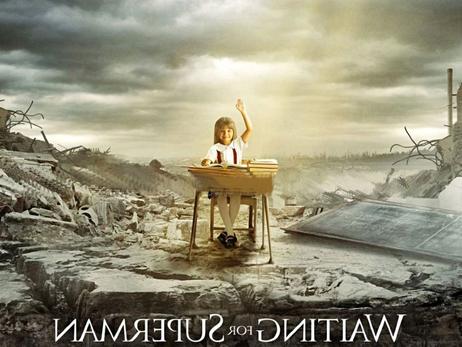KIPP schools, part of the Knowledge is Power Program, were lauded in the film, "Waiting for Superman," as a model for other public schools to follow. The higher graduation rates, even in some of the poorer areas of the country, seem to point to the benefits of longer school days and a few weeks of summer school to help kids catch up on their studies. However, recent reports about KIPP school results are casting some doubt on the results these schools have boasted.
Demographic Questions
A recent study conducted by Western Michigan University and Columbia University's Teachers College in New York suggest that the stellar graduation rates seen in KIPP schools may be due more to attrition than to teaching methodology. According to a report at Bloomberg, KIPP schools may even "cherry pick" their student population, with lessdisabled students or children with limited English skills than other schools in their area. In addition, the new study found that the per-student funding may also be higher in KIPP schools.
Gary Miron, the lead author of the study, said that while KIPP schools do have above-average academic performance with a predominantly poor student body, the students that attend these schools may not be as indicative of the demographics of the district as once thought. Miron told Bloomberg, "There's a perception that KIPP is a model for turning around troubled schools. That's a myth."
Attrition Problems
One of the biggest concerns raised by the Western Michigan study is the attrition rate seen in many KIPP schools. Steve Mancini, a spokesman for KIPP, told Bloomberg that the annual attrition rate for KIPP is 12 percent. This number is taken from an earlier study conducted by Mathematica Policy Research, Inc., which found the attrition rate to be similar to what the KIPP students would have faced at other schools within their district.
However, Mancini points out that when a student drops out of a public school, that spot is generally filled with another struggling student. KIPP schools do not replace students that drop out, so additional students with challenges never come into the system. Mancini's study also showed that as many as 40 percent of black males leave KIPP schools between 6th and 8th grade.
A report at the at the University of Colorado at Boulder states, "The KIPP study's description of attrition only considers half the equation, when comparing KIPP schools to matched traditional public schools. The researchers looked at the attrition rates, which they found to be similar – in the sense of the number of students departing from schools. But they never considered the receiving or intake rate. Even though the researchers agree that the students who are mobile are lower performing, they do not take into account the reality that KIPP schools generally do not receive these students."
According to a report at the , Miron responded with his own attrition analysis, which found that there is a 19 percent drop in enrollment in KIPP schools between grades 6 and 7, and a 24 percent drop in enrollment between grades 7 and 8. On the other hand, public schools maintain the same enrollment numbers throughout these years.
Here is a Waiting for Superman trailer.
Students with Challenges
Miron's report also found that KIPP schools have a lower percentage of disabled students or children who struggle with the English language. According to the study, around 12 percent of KIPP students have limited English skills, compared with the district average of about 19.2 percent. KIPP schools also reported about 6 percent of their students had some sort of disability, which was about half of what other schools in the district had. Mancini said that KIPP is working to recruit more students that fall into these two categories.
Student Funding
The third point of contention over the success of KIPP schools is the student funding. Miron states that funding per student in KIPP schools is much higher than it is in public schools. Miron's study found that KIPP schools receive an average of around $12, 731 per student, compared with $9,579 for the average charter school in the United States and $11,937 for the average public school. These numbers were in accordance with federal data for the 2007-2008 school year.
Miron also found that KIPP schools receive an additional $5,760 per student in private contributions each year, bringing the annual total for student funding to $18,491. That is $6,500 more than local districts received during the same time frame. Miron stated that the higher funding levels present a problem for the assertion made by KIPP schools that they can be a model for cash-strapped public schools.
Mancini countered those numbers, saying that the research included funding that was raised for capital projects and did not go directly to students. Mancini told Bloomberg, "We're not spending demonstrably more than local districts."
Despite the discrepancies in some of the data that was brought to light by the Western Michigan study, both sides of the coin agree that KIPP schools do provide excellent academic results to the students who attend and remain in the schools until graduation. More than 85 percent of KIPP alumni have gone on to attend post-secondary schools, even though more than 80 percent of their students are eligible for federal free or reduced-price meal programs. There is no doubt that longer school days and summer support may be a benefit to students – it's simply a question of just how big that benefit really is.
Questions? Contact us on Facebook @publicschoolreview.












